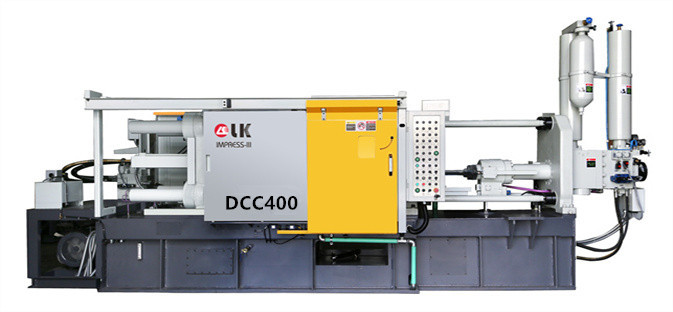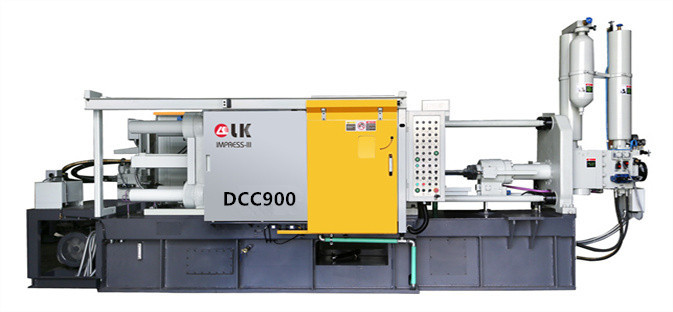What is the Process Flow of the Molding Machine?
LK Die Casting Machine / 2024-07-15 11:22:41
The molding machine occupies an important position in modern industry and is a key equipment for manufacturing various molds.
The process flow of the molding machine involves multiple steps, each of which is crucial and directly affects the quality and precision of the final mold.
This article will introduce the process flow of the molding machine in detail, covering all aspects from design to final mold completion, to help readers fully
understand the working principle and application of the molding machine.

Mold design
1. Demand analysis
Before mold manufacturing, a demand analysis is first required. Understand the customer's specific requirements for the mold, including the shape, size, material
and performance of the mold.
This is the basis of the entire process to ensure that the final mold can meet the needs of customers.
2. Mold design
Based on the results of the demand analysis, computer-aided design (CAD) software is used for mold design.
Factors such as the structure, processability, and processing difficulty of the mold need to be considered during the design process.
After the design is completed, detailed design drawings and technical documents are generated to provide a basis for subsequent processing.
3. Design review
After the design is completed, a design review is required. The review is conducted by project team members, technical experts, and customer representatives to
check whether the design meets the requirements and whether there are design defects or room for improvement.
After the design review is passed, the next process flow will be entered.
Material preparation
(1). Material selection
Select suitable mold materials according to the design requirements and use conditions of the mold. Common mold materials include steel,aluminum alloy and
cemented carbide.
The choice of materials directly affects the service life and performance of the mold, so it needs to be carefully considered.
(2) . Material procurement
Procure materials according to the results of material selection.
Ensure that the purchased materials meet the design requirements and have qualified quality certificates and inspection reports.
(3). Material pretreatment
After the materials are purchased, they need to be pretreated. Including material cleaning, descaling, and cutting.
The purpose of pretreatment is to improve the processing performance and surface quality of the material and prepare it for subsequent processing.
Rough processing
1. CNC processing
The rough processing stage is mainly carried out using CNC machining centers.
According to the design drawings, write CNC programs and control the tool for preliminary processing. The purpose of rough processing is to remove excess material
and form the basic shape of the mold.
2. EDM
For the processing of some complex shapes or hard materials, an EDM machine can be used.
EDM removes materials and realizes the processing of complex shapes through the discharge between the electrode and the workpiece.
3 . Wire cutting
The wire cutting machine is also one of the important pieces of equipment for rough processing.
It cuts the workpiece through the electrode wire and is suitable for processing mold parts with complex shapes and high-hardness materials.
Heat treatment
1. Heat treatment process
After the rough processing is completed, the mold needs to be heat-treated.
The purpose of heat treatment is to improve the hardness, strength, and wear resistance of the material. Common heat treatment processes include quenching,
tempering, and carburizing.
2. Heat treatment equipment
The equipment used in the heat treatment process mainly includes a quenching furnace, tempering furnace, and carburizing furnace.
Select appropriate heat treatment processes and equipment to ensure that the performance of the mold after heat treatment meets the requirements.
3. Heat treatment inspection
After the heat treatment is completed, the mold needs to be inspected.
Mainly inspect the hardness, structure, and deformation of the mold to ensure that the heat treatment effect meets the design requirements.
Finishing
1. Precision Grinding
During the finishing stage, grinding machines are mainly used for precision grinding.
The purpose of grinding is to improve the dimensional accuracy and surface quality of the mold. During the grinding process, the processing parameters need to be
strictly controlled to ensure that the mold surface is smooth and flat.
2. Polishing
Polishing is one of the important steps in finishing. The mold surface is polished by a polishing machine to improve the surface finish and aesthetics.
The polished mold surface should achieve a mirror effect without obvious scratches and flaws.
3. Precision machining
For some high-precision and complex-shaped mold parts, precision machining is also required.
CNC machining centers, EDM machines, wire cutting machines, and other equipment can be used for precise secondary machining to ensure dimensional accuracy and
shape accuracy of the mold.
Mold assembly
1. Part preparation
After finishing, the various parts of the mold need to be prepared. Including cleaning, deburring, and inspecting parts to ensure that the surface of the parts
is smooth and defect-free.
2. Assembly process
According to the design drawings, the various parts are assembled according to a certain assembly process.
Special tools and equipment are required during the assembly process to ensure that the parts fit tightly and are positioned accurately.
3. Assembly inspection
After the mold is assembled, an assembly inspection is required. It mainly inspects the assembly accuracy of the mold, the fit of each component, and the overall
structure of the mold. After the assembly inspection is passed, the mold enters the debugging stage.
Mold debugging
1. Debugging preparation
Before mold debugging, debugging preparation is required. Including the preparation of debugging equipment, the writing of debugging programs, and the formulation
of debugging plans.
The purpose of debugging preparation is to ensure that the debugging process goes smoothly.
2. Debugging process
During the mold debugging process, the mold needs to be tested and the working condition of the mold needs to be checked.
During the debugging process, various parameters of the mold need to be adjusted to ensure that the mold can work normally and produce qualified products.
3. Debugging inspection
After the mold is debugged, a debugging inspection is required. It mainly inspects the working performance, product quality, and production efficiency of the mold.
After the debugging inspection is passed, the mold enters the acceptance stage.
Mold acceptance
1. Acceptance criteria
Before mold acceptance, detailed acceptance criteria need to be formulated.
The acceptance criteria should include indicators such as the mold's dimensional accuracy, surface quality, working performance and service life to ensure that the
mold meets the design requirements.
2. Acceptance process
According to the acceptance criteria, the mold is fully inspected. Professional inspection equipment and tools are required during the acceptance process to ensure
that the inspection results are accurate and reliable.
3. Acceptance report
After the acceptance is completed, a detailed acceptance report needs to be written.
The acceptance report should include various inspection results and usage suggestions of the mold, and provide customers with comprehensive mold information.
Mold delivery
1. Packaging and transportation
After the mold is accepted, it needs to be packaged and transported.
Shockproof and moisture-proof packaging materials need to be used during the packaging process to ensure that the mold is not damaged during transportation.
During transportation, it is necessary to choose a suitable transportation method and route to ensure that the mold is delivered to the customer on time.
2. Customer training
After the mold is delivered, the customer needs to be trained. The training content should include the use of the mold, maintenance and common fault handling,
etc., to ensure that the customer can use and maintain the mold correctly.
3. After-sales service
After the mold is delivered, it is also necessary to provide complete after-sales service. After-sales service should include regular maintenance of the mold,
technical support and troubleshooting, etc., to ensure that the mold can work normally during use.

Summary
The process flow of the molding machine involves multiple steps, and each step is crucial. Through a scientific and reasonable process flow, the quality and
production efficiency of the mold can be improved, the production cost can be reduced, and the needs of customers can be met.
This article introduces the process flow of the molding machine in detail, hoping to help readers fully understand the working principle and application of the
molding machine.
The molding machine plays an important role in modern industry and is a key equipment for manufacturing various molds. In the future, with the continuous
advancement of technology, the process flow of the molding machine will be more intelligent, efficient, and green, providing strong support for the development of
all walks of life.
For more info, you can refer to: https://www.youtube.com/shorts/JLX410QV_kw
Contact LK Egypt to learn more info about the die-casting machine
LKAGENT OFFICE DCM
Address: Industry Zone, South of Port Said Kebly, Egypt
https://www.zazdiecasting.com/
Phone: +86 13598704163
Mobile: +20 101 304 3317 +20 150 181 8310
Email: jack@zazmae.com ahmedmahmoud@zazmae.com
#die cast tooling
#trivalent chromate
#rapid prototype casting
#a360 aluminum
#aluminum caster
#aluminum prototype
#ideal 55 slider parts
#density of aluminum kg/mm3
#magnesium sheet metal
#parts of a metal gate
#subcontracting of screw machining for the luxury sector
#wall aluminum
#die casting tooling
#tooling for die casting
#density of aluminium in kg mm3
#clear chromate
#es casting metals
#gating material
#prototype aluminum
#sigma castings
#subcontracting of screw-machining for household appliances
#we squeeze to please machine
#aluminium gravity die casting
#aluminum part
#aluminum rapid prototyping
#nickel casting
#plunger tip for die casting machine
#rapid prototyping aluminium
OTHER CONTENT
-

2024-09-19 14:16:15 LK Cold Chamber Die Casting Machine DCC900 Locking Force: 9000KN Die Height: 400-1000mm Space Between Tie Bars: 930x930mm Shot Weight: 13.5Kg Casting Area Max:2250c㎡
More -

2024-09-19 14:11:06 LK Cold Chamber Die Casting Machine DCC280 Locking Force: 2800KN Die Height: 250-650mm Space Between Tie Bars: 560x560mm Shot Weight: 2.9Kg Casting Area Max:700c㎡
More -

2024-09-19 10:23:07 LK Cold Chamber Die Casting Machine DCC580 Locking Force: 5000KN Die Heigh: 350-850mm Space Between Tie Bars: 760x760mm Shot Weight: 6.9Kg Casting Area Max:1250c㎡
More -

2024-09-19 10:11:20 LK Cold Chamber Die Casting Machine DCC400 Locking Force: 4000KN Die Height: 300-700mm Space Between Tie Bars: 669x669mm Shot Weight: 4.7Kg Casting Area Max:1000c㎡
More

